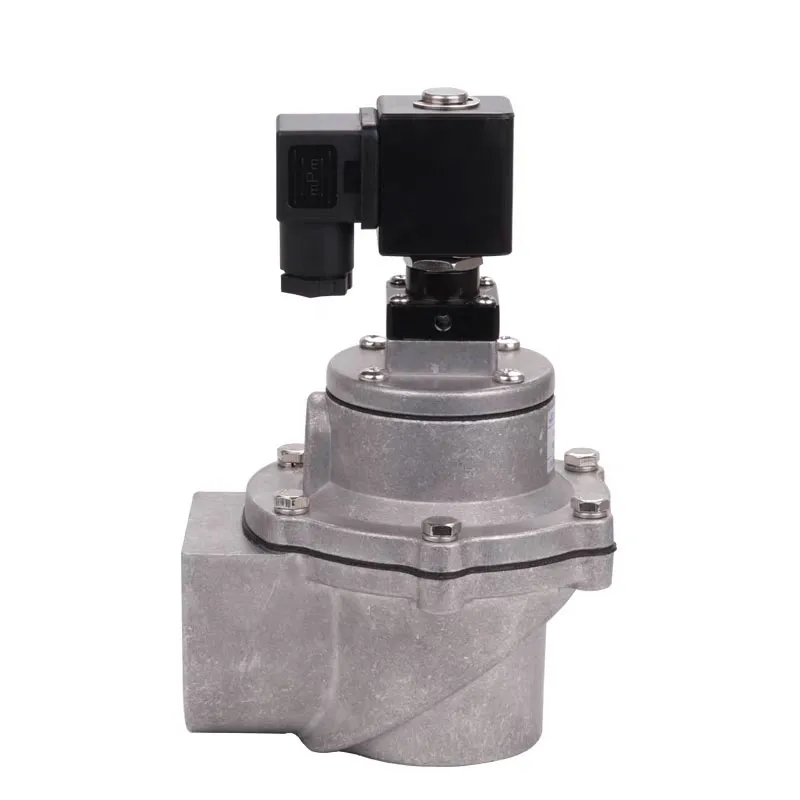Maintenance Tips for Ensuring Optimal Performance of Pulse Valves
2024-12-05
Pulse valves are critical components in dust collection systems, particularly in industries such as cement, power generation, and pharmaceuticals. These valves control the release of compressed air to clean filter bags or cartridges, ensuring effective dust removal and system efficiency. Proper maintenance is essential to keep pulse valves functioning optimally. Here are some key tips:
1. Regular Inspection
- Frequency: Inspect pulse valves at regular intervals, typically once every 3–6 months, depending on usage.
- What to Check:
- Signs of wear or damage on the diaphragm and seals.
- Build-up of dust or debris in and around the valve.
- Proper alignment and secure mounting of the valve.
2. Clean the Valve Components
- Dust and residue can accumulate, causing blockages or reduced airflow.
- Use a soft brush or compressed air to remove debris from:
- Diaphragms.
- Inlet and outlet ports.
- Solenoid assemblies.
3. Monitor Air Pressure
- Optimal Pressure: Maintain the pressure within the manufacturer’s recommended range (typically 5–7 bar or 75–100 psi).
- Low pressure can result in incomplete cleaning cycles, while high pressure may damage the valve.
4. Inspect the Diaphragm
- Common Issues: Tears, cracks, or stiffening due to wear or chemical exposure.
- Replacement: Replace the diaphragm immediately if damage is detected to prevent system inefficiency or valve failure.
5. Check the Solenoid Coil
- Ensure the solenoid coil is securely attached and free of corrosion.
- Use a multimeter to test electrical continuity and ensure the coil is functioning correctly.
- Replace the coil if it shows signs of overheating, short circuits, or electrical failure.
6. Tighten Connections
- Loose fittings can cause air leaks, reducing the valve's performance.
- Check and tighten:
- Air supply lines.
- Bolts and fasteners on the valve housing.
7. Lubrication
- Most pulse valves are designed to work without lubrication.
- If required by the manufacturer, use a light, non-contaminating lubricant sparingly to prevent clogging.
8. Test Functionality
- Perform a test pulse to verify that the valve operates smoothly and delivers the expected burst of air.
- Ensure there is no delay or inconsistency in response.
9. Replace Worn Components
- Keep a stock of spare parts like diaphragms, seals, and solenoid coils.
- Replace components proactively during scheduled maintenance to prevent unexpected breakdowns.
10. Maintain Clean Air Supply
- Use filters or dryers to ensure the compressed air is free of moisture, oil, and contaminants.
- Clean or replace air filters as part of routine maintenance.
11. Follow Manufacturer Guidelines
- Refer to the manufacturer’s manual for specific maintenance schedules and recommended practices.
- Use only authorized replacement parts to ensure compatibility and reliability.
12. Record Maintenance Activities
- Keep a log of all inspections, repairs, and replacements.
- This helps track wear patterns and plan preventive maintenance.

Benefits of Proper Maintenance
- Increased Efficiency: Ensures effective cleaning of dust collectors, enhancing system performance.
- Extended Lifespan: Reduces wear and tear on valves, minimizing the need for frequent replacements.
- Reduced Downtime: Prevents unexpected failures that can disrupt operations.
- Cost Savings: Lowers repair and replacement costs by addressing issues early.
Conclusion
Regular maintenance of pulse valves is crucial for the optimal operation of dust collection systems. By following these tips, you can ensure reliable performance, reduce downtime, and enhance the efficiency of your industrial processes. Proactive care not only extends the lifespan of the valves but also contributes to a cleaner and safer working environment.


